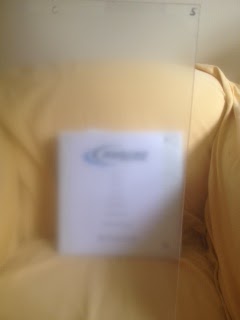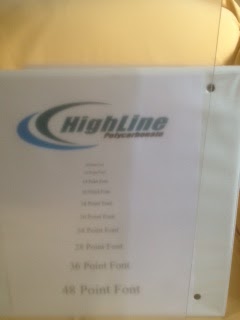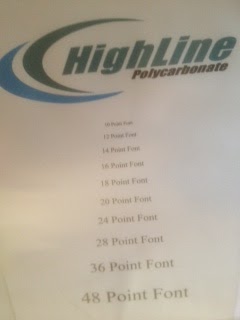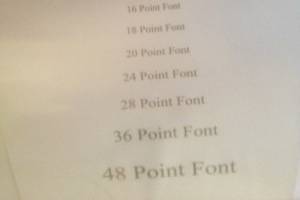Anti-glare coatings are different to anti-reflective coatings. Anti-glare coatings are generally produced using an abrasion resistant hard coat with small particles in the coating to give a matte surface. This matte surface stops light being reflected from the sheet surface back to the viewer so that the user’s view is not obscured by glare from lighting or the sun.
One down side to the matte surface is that the light transmission of the sheet is lowered and the view through the sheet is hazy. The more of the matte agent that is put into the sheet the more the glare is reduce, but also the sheet becomes more hazy and the view more obstructed.
To illustrate the effect of an anti-glare coating we have taken three pictures of an anti-glare sheet with a 40% gloss level. The 40% gloss is quite a high level of matte agent – we commonly supply product with gloss levels of 60% and as high as 80%. The 80% gloss level is much more transparent but does not reduce the glare as much as the 40% gloss level material.
We are often asked how much does the reduction in gloss level obscure the view through the sheet? The answer depends on what you are trying to view. If you are trying to view something that is a long way away through the sheet, the object is still able to be seen but the view is very blurred. To show this effect, we positioned a typed page only 15″ behind the anti-glare sheet. The page is visible but the details are not.

We then moved the page to 5″ behind the sheet. Again the page is visible and you can even start to make out the detail of some of the larger font. 48 Point font is clearly legible, even 28 Point font is just visible, while smaller font can be seen but not read.

We then moved the typed page to immediately behind the sheet and the page was even touching the sheet. Nearly all of the font, even the smallest can be clearly read.

When choosing an anti-glare gloss level it is important to test it in your application. The questions that need to be answered are how much do you need to reduce glare and how much haze can you accept. The answers to these questions depend on what environment you are you using the sheet in and what do you need to see through the sheet.

